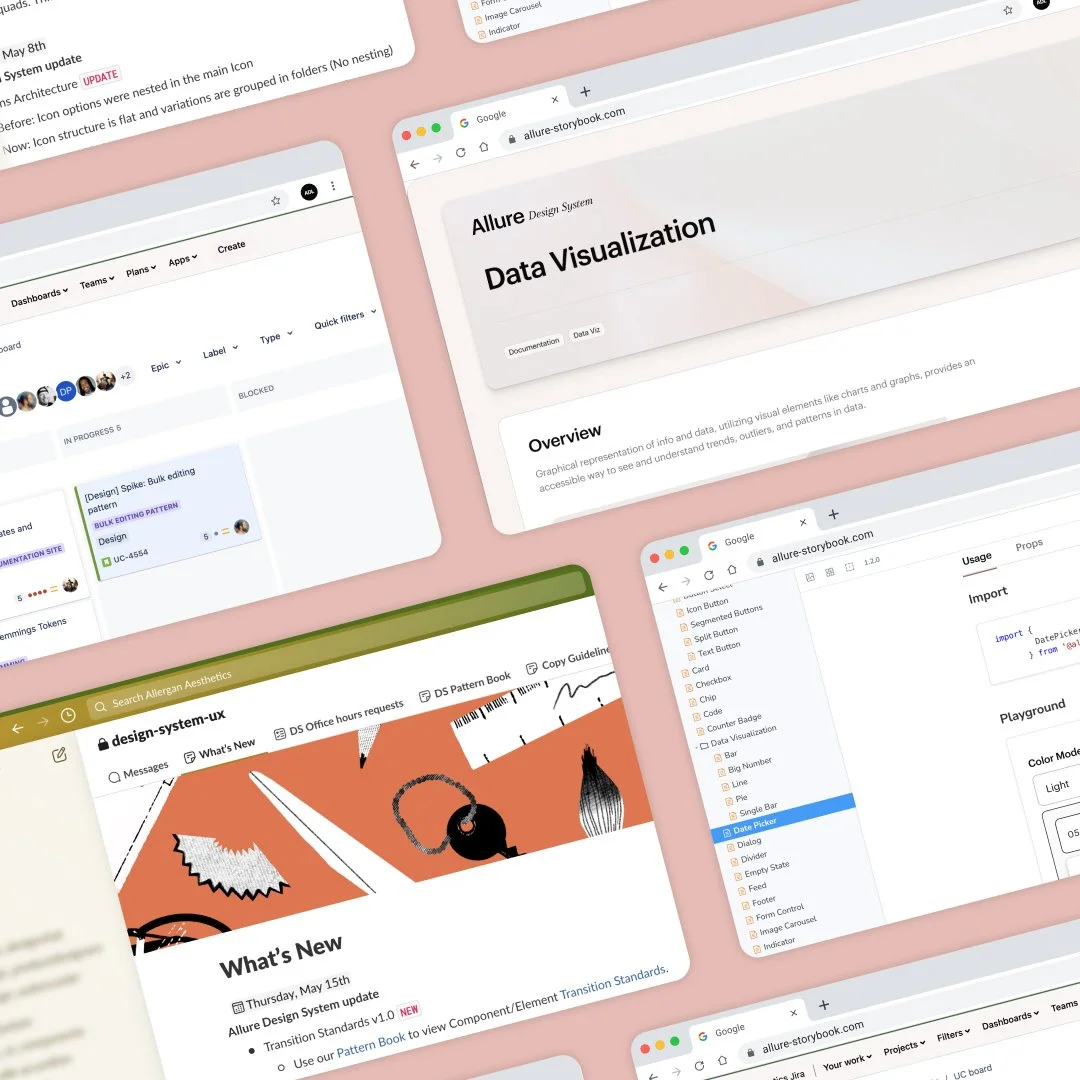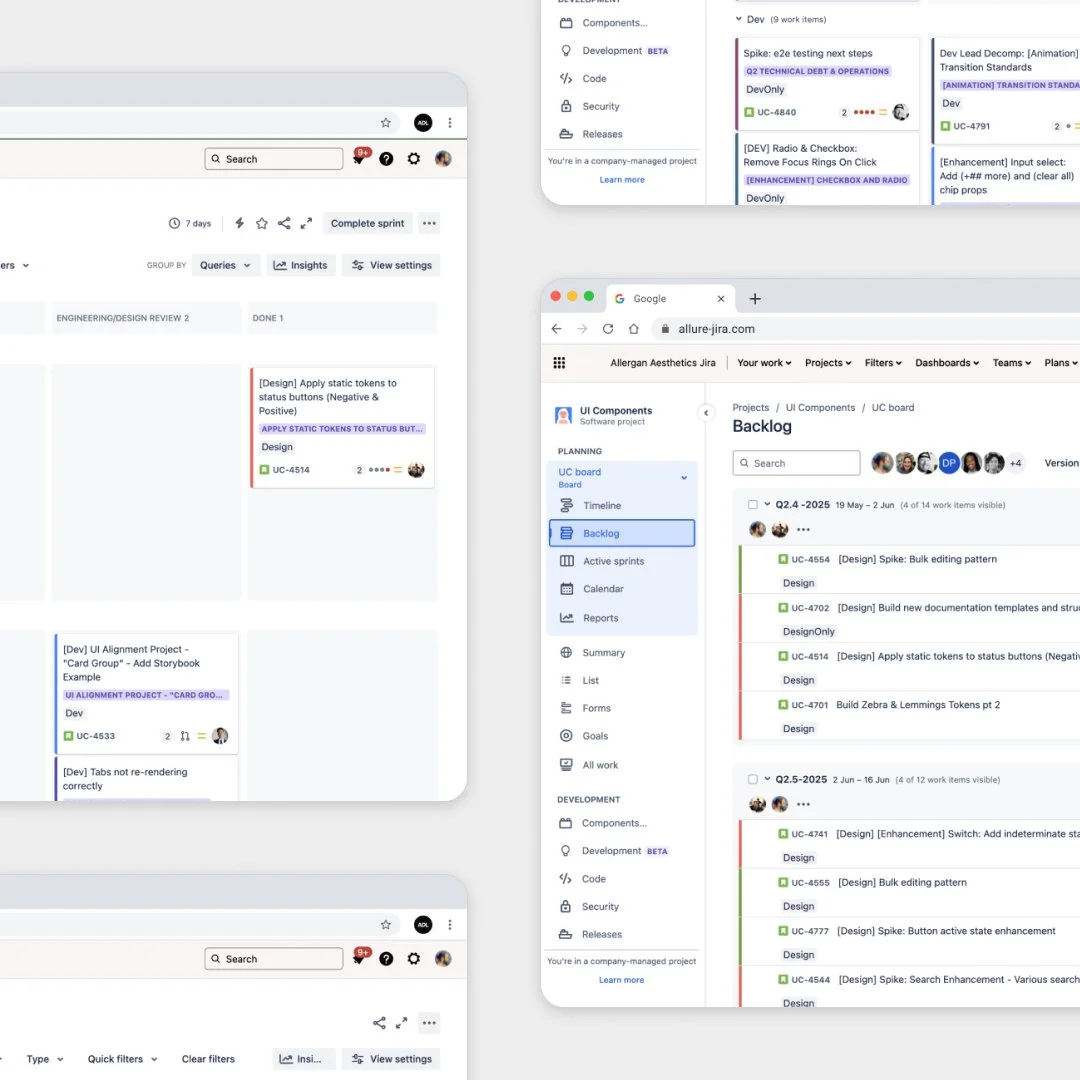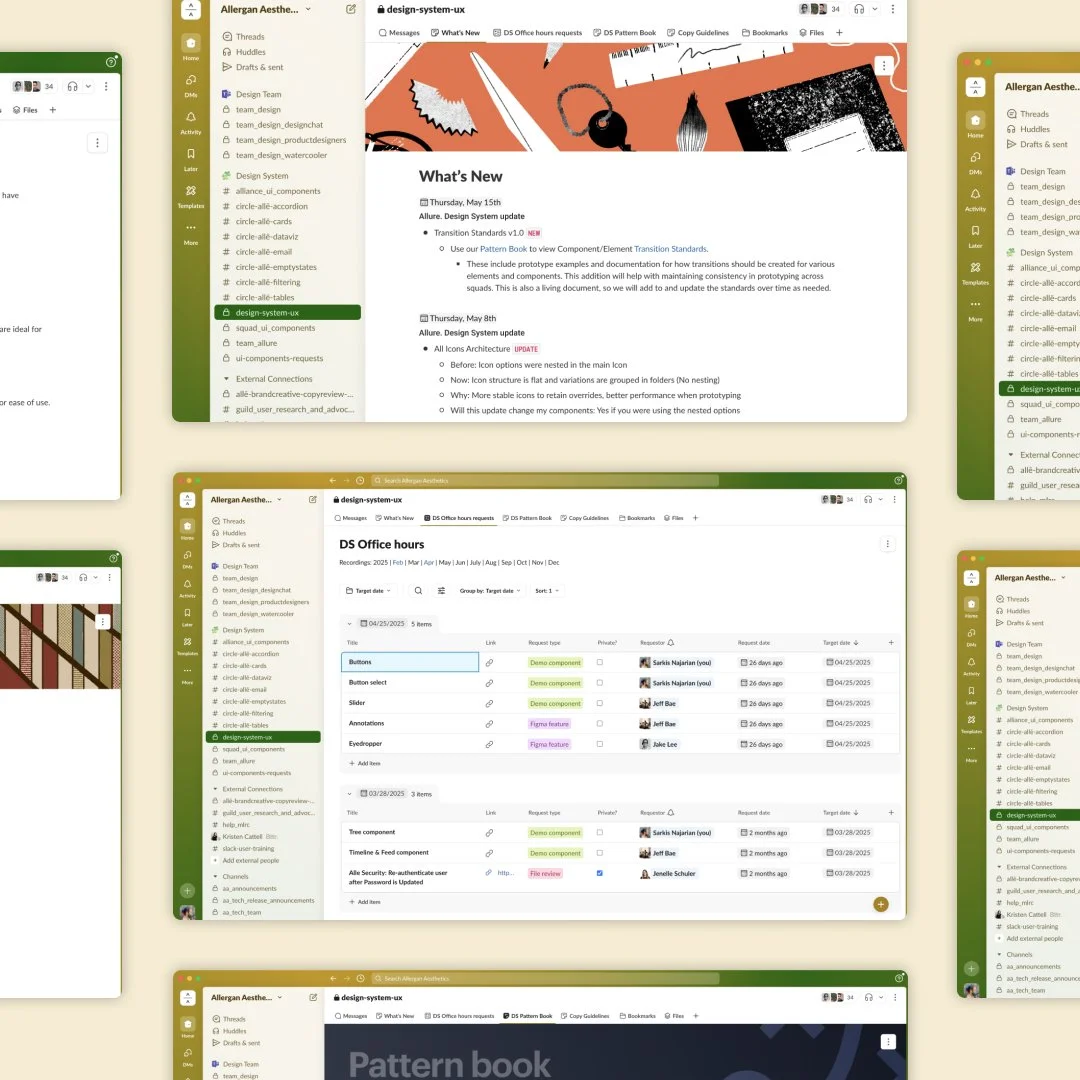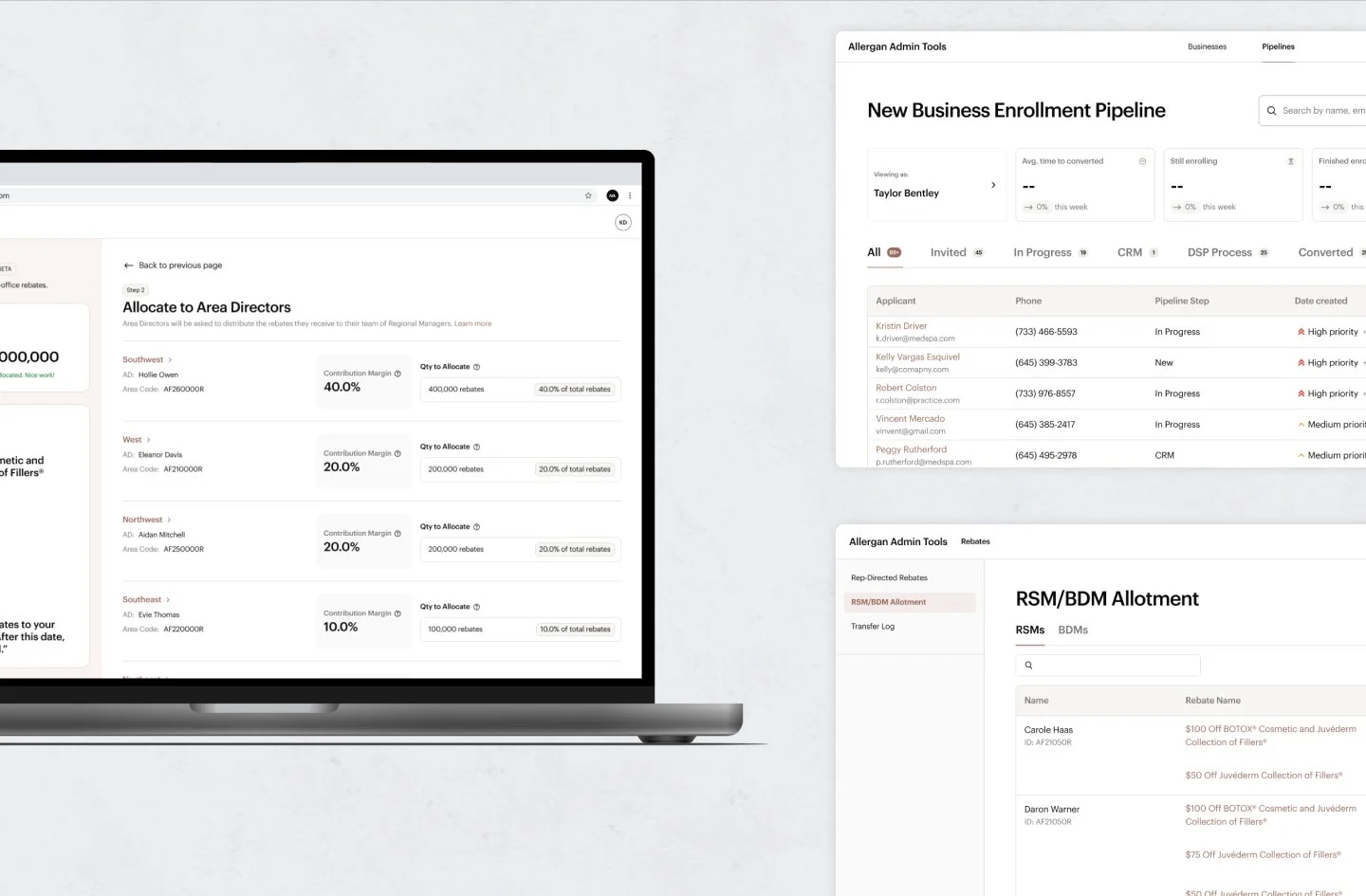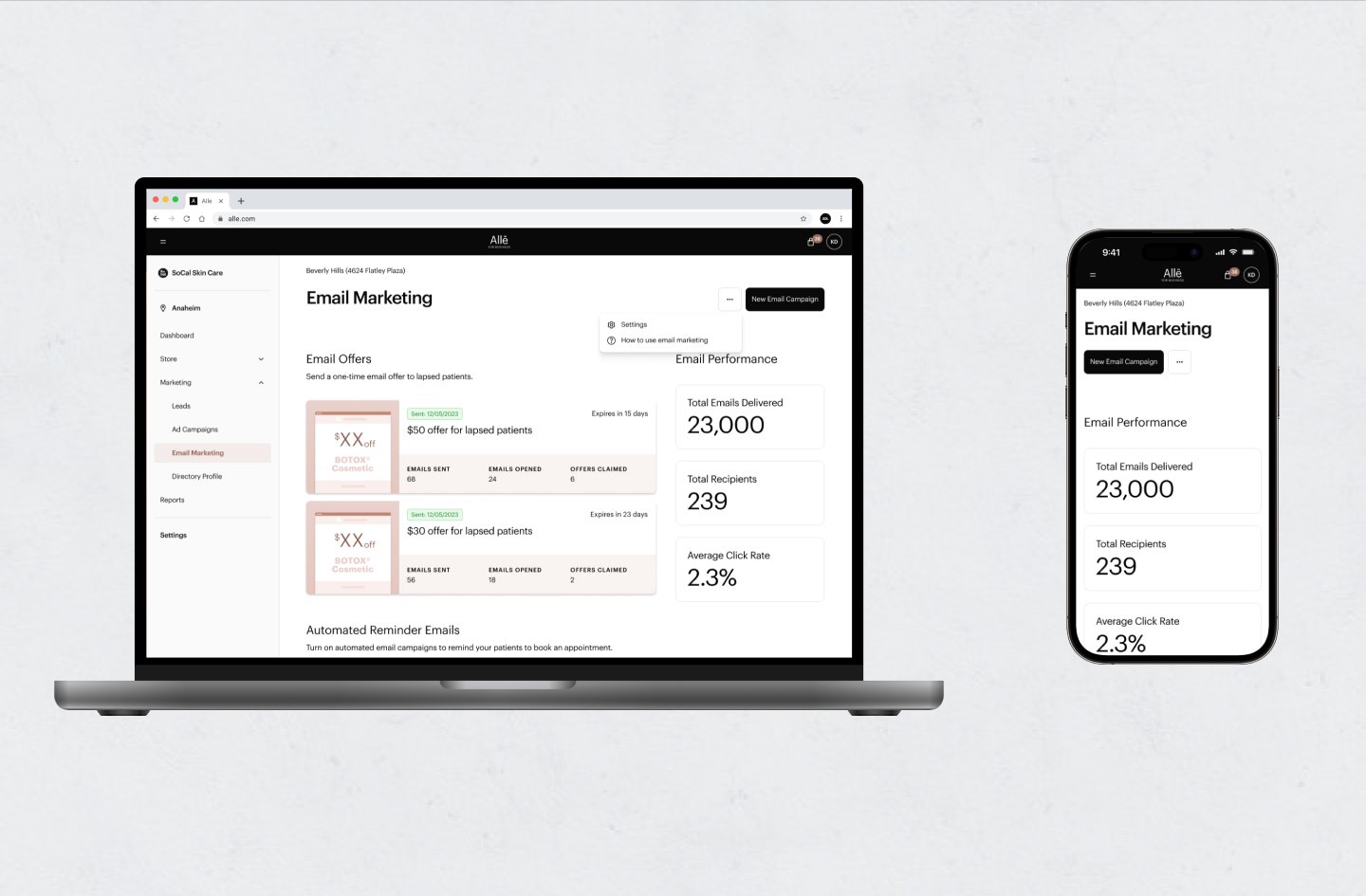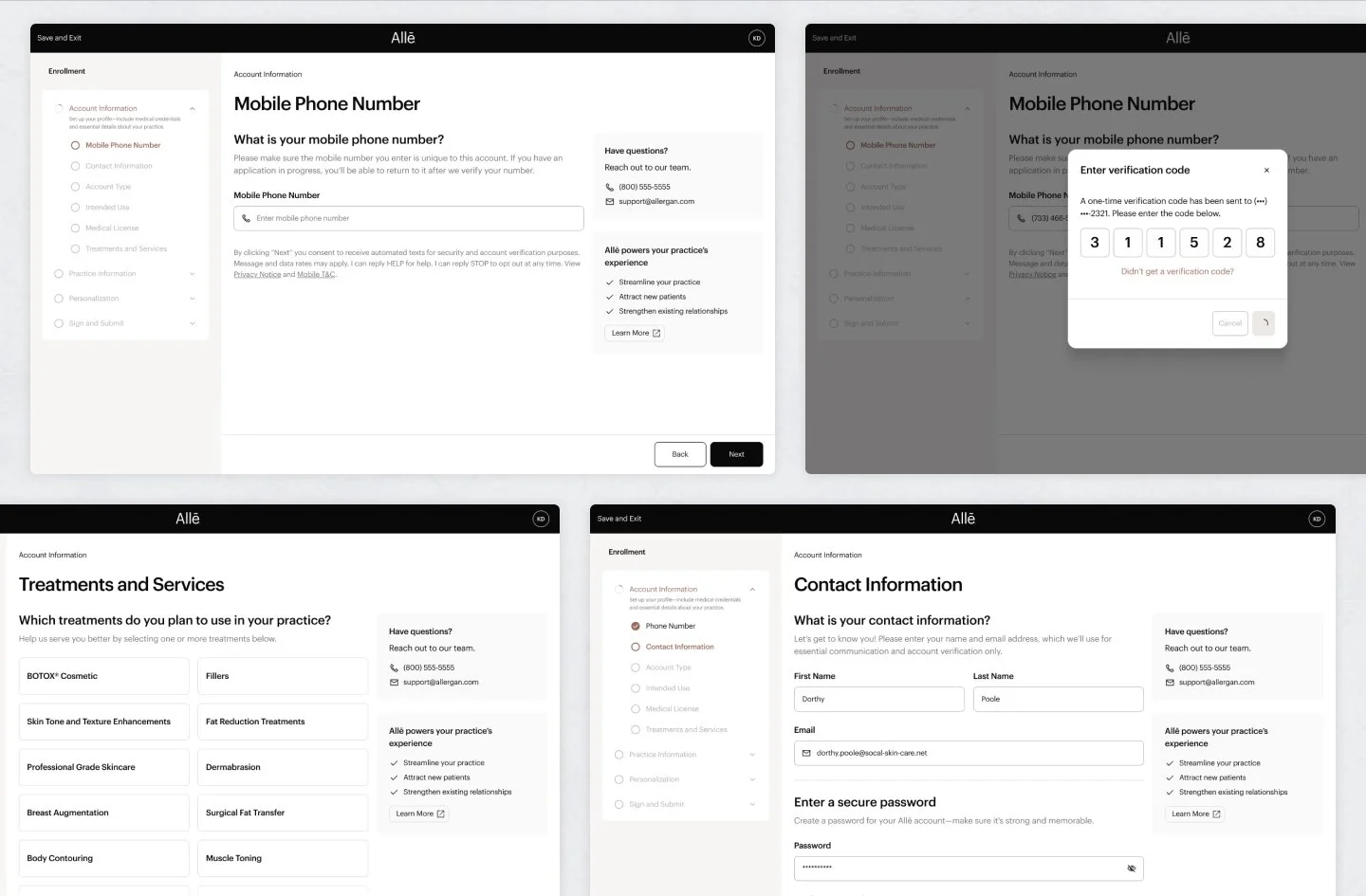
allure design system
DESIGN SYSTEM & PRODUCT DESIGN
from vision to reality: the ds journey
As part of AA Tech, the technology division of Allergan Aesthetics, our team was tasked with developing a unified Design System to streamline and standardize the company’s primary digital verticals: the business solutions SaaS platform (Allē), the internal facing admin tools (Allē for Employees), the Allē mobile application (Allē app), the customer-facing website, and the email ecosystem.
Over the course of two years—and with a dedicated team of just three—we successfully delivered an advanced Design System that surpassed initial expectations. As of 2025, the system was not only highly intuitive but also well ahead of industry standards. For designers, we provided a robust, easy-to-use Figma component library enhanced with advanced features such as variables and string management to accelerate the design process. For developers, we implemented a highly efficient design-to-development handoff, integrating tools like Storybook and JIRA to ensure a seamless and reliable front-end experience.
Beyond creation, we placed significant emphasis on driving adoption across the organization. Our efforts included hosting weekly office hours, conducting designer onboarding sessions, participating actively in design reviews, managing dedicated Q&A channels for both developers and designers, and maintaining multiple communication channels for Design System updates.
Our team consistently exceeded quarterly goals and continually built upon our early successes. By the end of year two, the Design System had become a centralized foundation supporting multiple business verticals and was poised for its next evolution—Version 2.0—which would introduce innovations such as drag-and-drop template pages, intuitive Figma “modes” tailored to different team needs, and enhancements to further accelerate the design iteration process.
By the close of Q2 2025, we had successfully launched a comprehensive internal documentation and reference site, and we remained on track to release Version 2.0.
impact snapshot
Built a scalable, enterprise-grade design system using advanced Figma features—variables, strings, and modes—to support multiple company verticals with tailored theming and flexibility.
Designed and maintained a library of 70+ reusable components, driving consistency and efficiency across product teams.
Established a single source of truth by centralizing components into an internal library, streamlining collaboration between design and engineering.
Created a fully documented design system site, making guidelines, patterns, and usage rules accessible to the entire organization.
Provided ongoing system governance, user support, and onboarding through structured training, office hours, and asynchronous support channels.
Contributed to a high-performing design systems team that consistently exceeded velocity and delivery metrics relative to other teams in the organization.
development highlights
The gallery below showcases key elements of the design system we developed, including our internal documentation site, foundational components (e.g., buttons, color palettes, typography), and more advanced patterns such as data visualizations (charts and graphs) and interactive overlays (side trays, wizards, modals, and bottom sheets). Together, these assets demonstrate the system's scalability, visual consistency, and support for complex product use cases.
Governance and adoption
Our team partnered closely with engineering, maintaining tight alignment through bi-weekly standups and shared JIRA boards for tracking design system tasks. We collaborated across the full development lifecycle—including handoff meetings, refinement sessions, sprint planning, retrospectives, and user acceptance testing (UAT) of newly developed components.
We maintained a centralized Storybook library, enabling teams across the organization to easily access and implement system-approved components in their products.
To support adoption and communication, we established dedicated Slack channels for the design system. These channels served as hubs for system updates, design feedback, office hour sign-ups, and real-time support.
Additionally, we regularly participated in design critiques and hosted monthly showcases to present new features, share best practices, and address questions from stakeholders across the organization.
A taste of components
This example offers a glimpse into the power and sophistication of the components built within the design system. Specifically the data visualization component with its configurable Figma options, and a simplified preview of the supporting documentation designed to guide consistent implementation across teams.
To respect intellectual property, certain elements have been intentionally omitted.
Architecture at a glance
This example provides a behind-the-scenes look at the design system's structure in Figma, highlighting the use of tokens, variables, and modes to enable company wide scalability and theming. Featured here are advanced components; specifically modals and date pickers which demonstrate the system’s flexibility and design sophistication.
To respect intellectual property, certain elements have been intentionally omitted.
from system to screen
Below is a small collection of UI screens within the Allē platform showcasing the design system in action.
Spanning the core SaaS business tools, payments and checkout, onboarding, settings, email marketing, and internal admin tools.


